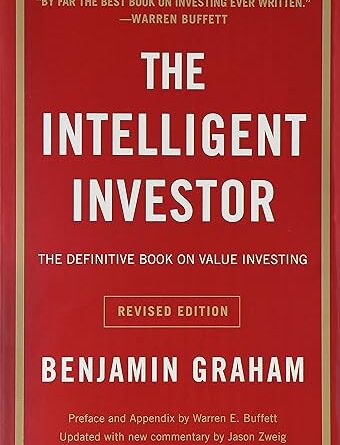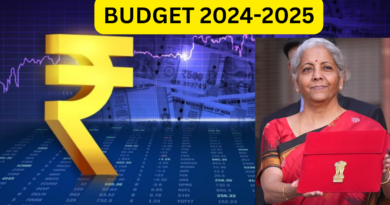The Intelligent Investor Book: A Comprehensive Summary
“The Intelligent Investor” by Benjamin Graham is like a gold mine of investing wisdom. It offers timeless principles in easy-to-understand language, focusing on fundamentals like margin of safety and long-term thinking. Graham’s Mr. Market resemblance helps investors stay rational with market fluctuations. Overall, it’s a must-read for anyone looking to build wealth through smart investing.
What’s the Big Idea?
Imagine you’re building a house. You want a strong foundation, right? Well, “The Intelligent Investor” is all about laying down a solid foundation for your investments. It’s not about chasing quick wins or following the latest trends. Instead, it’s about being smart, patient, and disciplined.
The Golden Rule: Margin of Safety
For instance, you were going to market for purchasing car. You come across one that catches your eye, but upon closer inspection, you notice some hidden damage that affects its value. Now, you wouldn’t be willing to pay the full asking price for that car, would you? Of course not! You’d want to negotiate a lower price to account for the damage and ensure you’re getting a good deal. This principle of seeking a discount to protect against potential losses is at the core of what Benjamin Graham refers to as the “margin of safety.”
In the world of investing, the margin of safety is like having a safety net that cushions you against unforeseen market downturns or unfavorable events. It involves buying stocks at a price significantly below their intrinsic value. In other words, it’s about purchasing shares for less than what they’re truly worth based on careful analysis and evaluation.
By buying stocks with a margin of safety, investors create a buffer zone. This buffer helps mitigate the risk of loss in case the investment doesn’t perform as expected. It’s imilar to buying that slightly damaged car at a discounted price; even if the car’s value decreases further due to additional issues, you’re still likely to come out ahead because you paid less than its true worth.
The margin of safety provides peace of mind to investors, knowing that they have room to absorb any unexpected setbacks without facing significant losses. It’s a fundamental principle that emphasizes the importance of being cautious and prudent in investment decisions, rather than chasing high-risk opportunities or speculative ventures.
Meet Mr. Market
Think of, you have a neighbor named Mr. Market who lives across the street. Every day, Mr. Market comes over to your house and offers to buy or sell stocks. Sometimes he’s in a great mood, bubbling with excitement, and offers to buy your stocks at high prices. Other times, he’s unhappy, willing to sell stocks to you at low prices.
Now, here’s the interesting part: Mr. Market’s emotions often influence his offers, leading to wild fluctuations in stock prices. One day he might be convinced that the economy is booming and stocks are worth a fortune, and the next day he might be convinced that the world is ending and stocks are worthless.
As an investor, you have a choice. You can either react emotionally to Mr. Market’s daily swings, buying when he’s optimistic and selling when he’s pessimistic, or you can take a more rational approach. Instead of blindly following Mr. Market’s mood, you can evaluate stocks based on their intrinsic value and make decisions accordingly.
ALSO READ : Stock Market Books: Every Investor Must Read Before investing
Defensive vs. Enterprising
- Defensive Investors:
- Play It Safe: Defensive investors prefer a cautious and conservative approach to investing.
- Low Risk: They prioritize preserving capital and avoiding losses over chasing high returns.
- Diversification: They tend to build portfolios that are well-diversified across different asset classes to minimize risk.
- Steady Returns: Their goal is to achieve steady, predictable returns over the long term, even if it means sacrificing some potential upside.
- Less Active: They typically spend less time actively managing their investments and may rely on passive strategies like index funds or ETFs.
- Enterprising Investors:
- Seek Opportunities: Enterprising investors are more proactive and willing to take calculated risks in pursuit of higher returns.
- Do Extra Research: They conduct thorough analysis and research to identify undervalued stocks or opportunities that others may overlook.
- Higher Risk Tolerance: They have a higher tolerance for risk and are comfortable with the possibility of experiencing greater volatility in their investments.
- Active Management: They may actively trade stocks, seek out special situations, or engage in more complex investment strategies to capitalize on market inefficiencies.
- Potential for Higher Returns: While enterprising investors accept the possibility of higher losses, they also aim for the potential of higher returns compared to defensive investors.
Think Long-Term
Thinking long-term is a fundamental principle in investing that emphasizes patience, perseverance, and a focus on the bigger picture. Here’s why it’s important:
- Patience Pays Off: Investing is not a get-rich-quick scheme. It’s about planting seeds today and nurturing them over time to reap the rewards in the future. By adopting a long-term perspective, investors can weather short-term market fluctuations and capitalize on the power of compounding.
- Avoiding Short-Term Noise: The financial markets can be noisy and unpredictable in the short term, driven by factors like economic data releases, geopolitical events, and investor sentiment. Thinking long-term allows investors to filter out this noise and stay focused on their investment goals.
- Utilizing the Power of Time: Time is a powerful supporter in investing. The longer you stay invested, the more time your investments have to grow and compound. By staying committed to your investments over the long term, you increase the likelihood of achieving your financial objectives.
Don’t Put All Your Eggs in One Basket
“Don’t put all your eggs in one basket” is a popular saying that holds valuable wisdom in the world of investing. Here’s what it means and why it’s important:
- Diversification: This saying emphasizes the importance of spreading out your investments across different asset classes, industries, and types of investments. By doing so, you reduce the risk of losing all your money if one investment performs poorly.
- Risk Management: Putting all your money into a single investment is risky because if that investment fails, you could suffer significant financial losses. Diversifying your portfolio helps mitigate this risk by ensuring that no single investment has too much influence over your overall financial health.
- Protecting Against Market Volatility: Different types of investments may perform differently under various market conditions. By diversifying your portfolio, you can potentially offset losses in one area with gains in another, helping to smooth out the overall volatility of your investments.
- Maximizing Returns: While diversification can help reduce risk, it also allows you to capture opportunities for growth in different areas of the market. By spreading your investments across a range of assets, you increase the likelihood of participating in the gains of successful investments.
- Maintaining Balance: Diversification helps ensure that your portfolio remains balanced and aligned with your financial goals and risk tolerance. By avoiding over-concentration in any one asset, you can better manage your portfolio’s overall risk-return profile.
Do Your Homework
Think of investing like studying for a test. You wouldn’t go in blind, right? Graham emphasizes the importance of doing your homework. Look at things like company earnings, debts, and management. The more you know, the better decisions you can make.
Don’t Let Emotions Rule
Imagine you’re at a carnival trying to win a prize. Sometimes you get excited and keep playing, even when you’re losing. That’s how emotions can mess with your investments. Graham advises staying calm and rational. Don’t let fear or greed cloud your judgment.
Conclusion
“The Intelligent Investor” is like a guidebook for navigating the world of investing. It’s full of timeless wisdom and practical advice for anyone looking to build wealth over the long term. By following Graham’s principles, you can become a smarter, more confident investor and achieve your financial goals.
So, whether you’re a seasoned pro or just starting out, “The Intelligent Investor” is a must-read for anyone interested in the fascinating world of finance.



